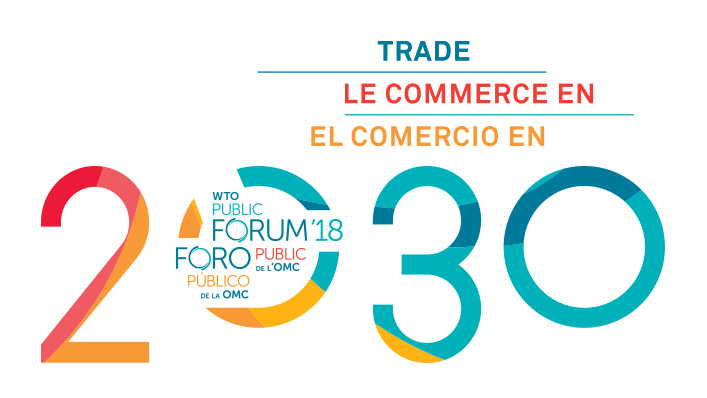Electronic commerce and inclusiveness of global value chains
5 Oct 2018 02:00h
Event report
Mr Xinquan Tu (Dean and Professor, China Institute for WTO Studies, University of International Business and Economics) served as moderator of the session. He started by introducing the panellists. He said that the discussions would focus on the possible role of e-commerce in enhancing the inclusiveness of global value chains (GVCs).
Mr Xiangchen Zhang (Permanent Representative and Ambassador Extraordinary and Plenipotentiary to the WTO), started by explaining the transformation of e-commerce in everyday activities. He noted the potential of including micro, small, and medium-sized enterprises (MSMEs) and small and medium-sized enterprises (SMEs) into global trade.
In addition, Zhang stressed how e-commerce facilitates the inclusion of these enterprises in GVCs. He noted that e-commerce must have clear digital policies. We need infrastructure programmes for these countries. He also explained the role of the Chinese government in facilitating digital trade pointing out the dialogue between stakeholders.
Ms Arancha González (Executive Director, International Trade Centre (ITC)) explained the ‘smart way’ for companies to participate takes advantage of the possibility of trade without intermediation. González said that 80% of online enterprises are micro-enterprises.
Furthermore, she noted the challenges of monopoly of the benefits of digital trade, electronic payment for services, consumer protection, logistics, national financial services, and product quality. Answering a question from the moderator, she said that China has worked on the eco-system approach to facilitate trade online. She also noted that the International Trade Centre (ITC) works with the countries in helping them to improve the online services and market.
Mr Ricardo Meléndez-Ortiz (Chief Executive, International Centre for Trade and Sustainable Development (ICTSD)), talked about the inclusiveness of MSMEs. According to a United Nations report, 52% of the world population is still offline. In addition, he said that the GVCs are largely based on physical infrastructures. He noted the complex issue of achieving connectivity without the necessary digital skills and human resources.
According to Meléndez-Ortiz, we need to work on facilitating trade using digital resources, for example, applications and platforms for the connectivity. More important, we need to improve gender equality for women. He said that we also need to resolve the deeper issues of security and privacy, and cross-border of data flows. He emphasised the protection of the consumer as well.
Mr Jian Wang (Chair Professor of International Business and E-business, University of International Business and Economics), explained that rules are based on business practices and business models in China. He presented ‘the Cross-border E-commerce Innovation and Implication for Inclusive Trade: the Case of China’ He said that these transactions are very important for both exporter and importer. He noted the role of transactions in international trade. In China, cross-border e-commerce has an eco-system and market structure. According to Wang, there are immerging third-party platforms in China to facilitate trade. He emphasised the importance of business to consumer (B2C) trade.
Furthermore, Wang gave the example of ‘Onetouch’ for paperless trading and integrated service. He mentioned product quality protection, protection period, and payment protection as important concepts and talked about matching buyers with sellers. He noted the large role played by the Chinese government in facilitating the ‘Emerging Model of Private Single Window Integrated Service Platform’. This platform deals with e-registration, e-inspection, e-ports, etc. He asked: how can we make sure that cross-border e-commerce is based on a secure, trusted global environment? He noted that we need stability, predictability, and consistency. He mentioned the role of an appropriate legal environment with mutual respect and co-operation in cross-border data flows.
Finally, he gave the example of the National Cross-border E-trade Pilot Zone (Integrated Pilot Zones, B2B) in 35 cities. He said that this business practice can be used by both public and private platforms. He stressed the exchange of information, willingness. and mindset needed in order to achieve cross-border e-commerce.
Related event

